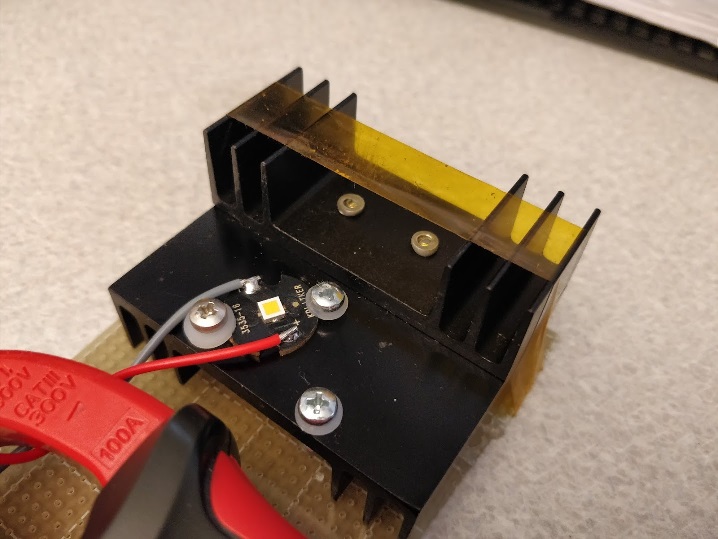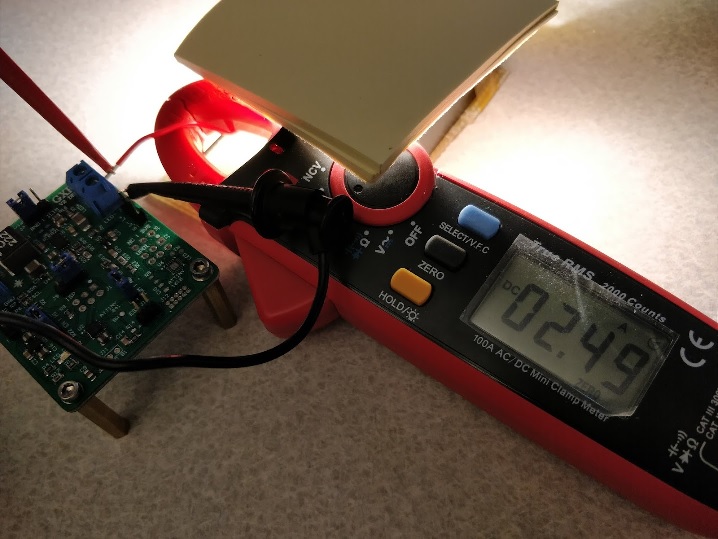Thanks for your kind words! I’m really not worried about making the driver for mass production. It’s a really a fairly simple process (other than the costs!) and I have a fair bit of experience sending out for assembly from 10 boards to tens of thousands. As it stands I can just send the package I have generated to a fab house, throw money at them, and get a box of assembled drivers with no additional work on my part. What I’m more concerned about is having a product for sale which is buggy or unsafe! Though if people don’t want to wait and prefer something which may have some quirks, don't mind paying for it, update the firmware in the future, or run the risk that the driver may have some issues, that’s OK as well. As a result, right now I’m just focusing on development and testing instead of for production.
It’s one thing to produce a driver that works (it’s working decently well now!), but another thing to make one that covers end cases, and safety (especially for one with such a large power capability). It also takes effort to have most bugs ironed out, and to have one that supports the firmware that people want. Thanks for your understanding everyone! Meanwhile if work still needs to be done on the firmware, I will be releasing all the hardware details so people can make their own first (or do a small batch order of the preliminary hardware) with the basic firmware I have right now. Many possible options!
Yes it’s great that there are lots of other drivers in progress so we’ll see how they go! As mentioned I did not start this project with any intention of making money out of it and anyone will be free to make their own. That said I’m hoping to get it to a state where I can get a batch of them made and have them distributed. More work needs to be done on the firmware (in progress), since stock firmware will have limited efficacy on any driver with similar topology. As a side note, Arduino is great! Helps in portability among different controllers, and it’s really no different from existing BLF firmware (which can be complied in Arduino, and likewise Arduino sketches can be complied with Atmel Studio as well. :) They’re one and the same thing, just with a different cosmetic wrapper.
Thanks for the kind comments! Is it possible, yep definitely. However again I’m not quite sure if it falls within the scope of this particular project, and it will certainly need more parts, and likely a slightly larger board area. :) So perhaps for a subsidiary project! Otherwise, pretty easy to implement.
Yes this is meant to be primarily a single cell boost driver, specifically for 6V LEDs or 12V LEDs, or for some people, 9V for 3S LEDs. As mentioned it can also work with 2S with 12V LEDs, but it is not a buck boost, and cannot do any sort of buck functionality, and was never designed to do so. If there is interest in a general purpose high power buck boost, that’s a separate (and fun!) topic! Not too hard to make a decent 5A driver too. Unfortunately I have limited time and I can't do so many things at once!
How’s Lexel’s driver doing? I originally though Schoki’s and Lexel’s driver were the same but turns out that they both have separate drivers. If Lexel can get a working driver out in production first, that's great and everyone should buy his driver! Like I said I'm not in this to make money, just working on this because I thought it would be an interesting EE project, and since there's interest, I'm working to try to make it better so more people can use it. Answering Agro’s questions, for 17mm, it’s easy to swap out the inductor for the smaller 3mm tall one, just with a little cost in efficiency and thermals, but will work just fine. Obviously the larger inductor will be better ![]() . I have basically no experience with other flashlights though so I'll be very happy to learn more about other popular 17mm and 20mm driver hosts and their physical constraints.
. I have basically no experience with other flashlights though so I'll be very happy to learn more about other popular 17mm and 20mm driver hosts and their physical constraints.
For sizes, I’m also working on a 20mm version because I need some for my SK98 hosts! Also 20mm allows me to make some significant layout improvements, instead of just naively expanding the ring size. However I have no current plans to make larger versions yet. The reason is because any larger board will allow me to move to an external-switching-fet(s) architecture, allowing for even better performance and cost compared to the GXB172 architecture. As a result, there’s really no reason nor difficulty in making a larger one. For example, if I had to make a 30mm driver board, I could go all the way to a 100W driver. So it’s outside the scope of this project series. Sure I could just expand the ring, or move components around keeping the schematic the same, but it's really not the ethos of the project, and since the source is available, anyone could build different version of their own.
For firmware, I’m working to incorporate Bistro and Narsil into the driver. Porting code across appropriate controllers is easy. Porting it to work with this particular architecture will take a little more time since there are particularities which need to be handled. Full feature testing will also need a little more work, and some features may not be applicable with a driver of this power density. Likewise some new features will also be added. But once the hardware is ironed out, the firmware follows separately but in parallel.

